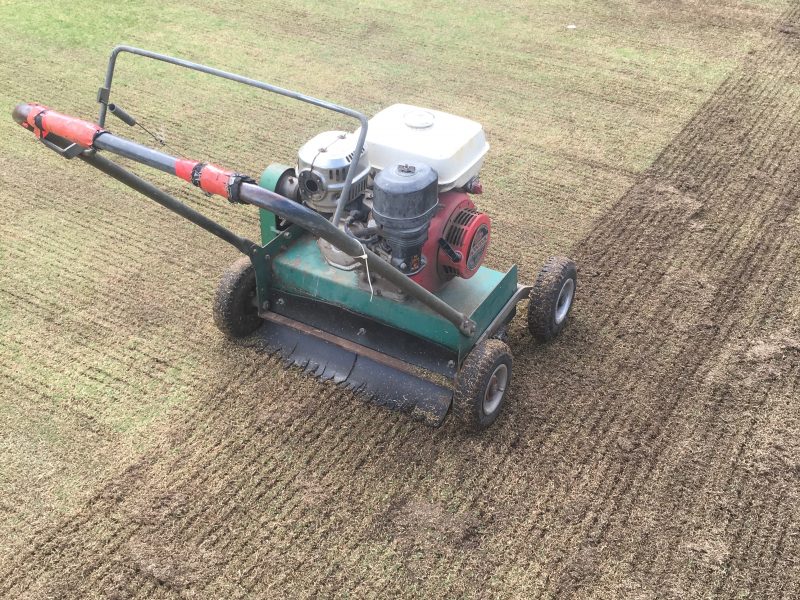
VERTIMOWING / DETHATCHING
Thick, spongy couch lawns respond well to a Spring ‘clean-up’ via vertimowing/dethatching. Vertimowing cuts vertically into the grass thatch layer which removing large amounts of thatch and water repellent organic matter that accumulates as grass grows.
Your lawn will at first appear decimated, yellow and even bald after a vertimow. It will quickly recover with a new generation of grass shoots through the surface, bouncing back with renewed vigour, colour and performance, especially through the warmest months.
If you think you’ve got a thatch issue and you’re either struggling with mow quality (scalping) or struggling getting water to travel through that thatch/decaying organic matter layer, then yes vertimowing is the solution. But before you do – be careful and consider the following.
Is the lawn species suitable for vertimowing? Buffalo lawns as a rule just don’t respond well to heavy/deep vertimowing renovations. Couch grasses in general respond well to almost ground level vertimowing.
Is vertimowing the cure?
Some people regard vertimowing as a cure for a sparse, failed lawn surface. Remember you only vertimow a surface that has been extremely successful and has actually grown on itself for a number of years, causing the spongy, thatchy repellent layer of both Rhizome and Stolon activity. Be sure to check root strength/viability and check rhizome activity just beneath the surface.
What about the removal of debris?
The verticutter performance and the depth setting is vital, but so is the debris removal, ideally raking it all up isn’t really practical, especially if you are removing 100m2 or more. Quality rotary mowers with wing tip blades and efficient catchers will offer good vacuum/suction of debris, but to ideally finish off the surface you need a vacuum to remove the last of it, before settling the surface back down. The amount of refuse that is removed is extraordinary make sure you have a way of removing, covering and transporting to the tip- or get a skip bin.
Follow up mowing
You can’t just leave the surface for a month or two, remember it will need mowing 15-20 days later to establish new sward height and uniformity amongst the new surface. Establish a consistent mowing routine to compliment the capital outlay and effort. Mowing demands will differ slightly with time of year of the job being done.
Nutrient strategy
Don’t plaster the surface with cheap, fast release nutrient sources (especially Nitrogen), or you will be back in the same boat in a year or two and will need to do it all again. Slow release nutrition incorporating trace elements will hold the surface from once again getting “fat”.
Contact us for a quote and further information.
